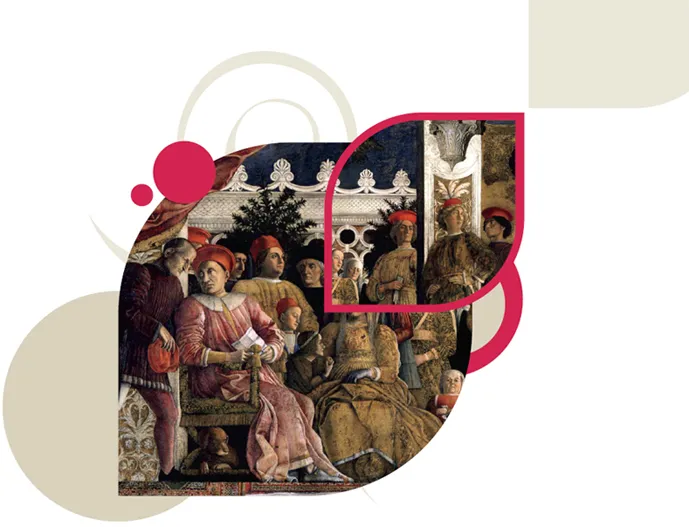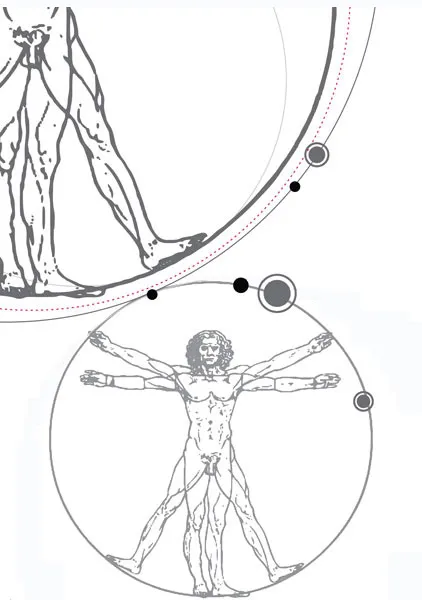![]()
![]()
The elusive source of
creative genius Everyone can name a few innovation heroes. Most people reflexively think of modern business icons like Steve Jobs, Sir Richard Branson, or Jeff Bezos. Others recall the “industry builders” of the nineteenth and twentieth centuries, such as Thomas Edison, Henry Ford, or Walt Disney. Some think back to the “great men” of the Renaissance era—like da Vinci, Galileo, or Gutenberg. And of course there are countless other individuals, many of whom are not well known, who have nevertheless earned a place in history’s great “Innovation Hall of Fame.” So we all seem to know what an innovator is. But what’s been harder to define for thousands of years is how innovators actually come up with their ideas.
In ancient times, it was believed that creativity was not a human attribute at all, but solely a divine one. The Sumerians, who are credited with a large number of technological and social innovations at the very beginning of human history, believed that the many creative achievements of their civilization were not due to their own efforts, but rather were gifts from the gods. The Babylonians and Assyrians, who were direct descendants of the original Sumerian people and builders of mighty empires, believed in guardian angels that guided and blessed their famed inventiveness in architecture, astronomy, mathematics, medicine, philosophy, and literature. As an example, the Babylonian King Nabopolassar, father of Nebuchadnezzar the Great (who was renowned for constructing the Hanging Gardens of Babylon), once said: “He (Marduk) sent a tutelary deity (cherub) of grace to go at my side; in everything that I did, he made my work to succeed.”1
In the Judeo-Christian tradition, human beings were likewise not considered to be “creative.”2 They were makers and users of things that God had created in the first place. Or, if they actually managed to invent something new, it was not thanks to the human imagination, but thanks to the grace, wisdom, and power of God. These “richly blessed” individuals functioned merely as conduits for the divine.
In ancient times creativity was viewed as a divine attribute The ancient Greeks perpetuated the belief that creativity was not something intrinsic to human beings. In Greek mythology, for example, it wasn’t humanity that invented fire, and thus initiated the rise of civilization. Instead, it was Prometheus the Titan, the champion of mankind, who stole it from heaven and gave it to them. As a punishment for this transgression, which was aimed at helping humans on the road to progress, Prometheus was sentenced by Zeus to eternal and agonizing punishment.
Perhaps the best known innovator in Greek mythology was Daedalus (meaning “clever worker”), who was supposed to have invented the crafts of carpentry and sculpture, as well as creating the first masts and sails for the navy of Minos, the king of Crete. He also built the famous labyrinth in which the monstrous Minotaur was kept, which made it almost impossible to slay this fearsome beast. But his most famous invention was human flight. He was the father of Icarus, who mythically flew too close to the sun and fell to his death when the wax on his wings of feathers melted in the heat. These magical wings were designed and constructed by Daedalus, who used his own pair of wings to successfully fly away from a tower where he had been imprisoned by the king. Pausanias, the Greek traveler and geographer, pointed to the source of this great inventiveness when he later wrote of Daedalus, “All the works of this artist . . . have a touch of the divine in them.” The moral of this mythical tale, which is a recurring theme in Greek mythology, is that human attempts to be inventive or creative (considered the exclusive province of the gods), as well as any pride associated with these attempts, can ultimately do more harm than good. David Landes, the renowned Harvard professor of economy and history, wrote that “the ancients were dreadfully afraid of this emulation of the gods, and not coincidentally the protagonists in each case were punished for their hubris.”3
In the Greek story of Pandora, supposed to be the first woman on earth, each of the gods helped in the act of creation by endowing her with a unique attribute or capability, including physical beauty, the power of speech and music, the skills of needlework, weaving and gardening, and fatefully also the trait of curiosity (which is why she opened the fabled “box,” releasing all manner of evil into the world). Pandora’s name—which meant “all-gifted”—was given to her not because she had any inherent abilities of her own but because every Olympian had given her one of these special gifts. Similarly, the Greeks believed that creativity—the capacity for imaginative or original thought—was an extrinsic power or gift that was imparted to people by divine spirits.
It was therefore customary for Greek philosophers, poets, and artists to seek their inspiration from mystical goddesses called “Muses.” Another common belief was that at birth everyone was assigned a personal “daemon”—an invisible guardian angel—whose role it was to mediate sacred wisdom, guidance, and motivation from above. The dramatist Menander, the famous historian and essayist Plutarch, and great philosophers such as Plotinus and Plato held this belief. Plato, for example, wrote that these intermediary beings interpreted and transported “divine things to men.” Socrates claimed he had a personal daemon—some form of spiritual oracle or “voice”—that spoke wisdom to him. Indeed, in Hellenistic culture and religion, people attributed even the heroic conquests of Alexander the Great not to the brilliant military acumen of the man himself but to the mighty daemon that guided him.4
This belief in a tutelary deity that would attend to a person from birth to death was also shared by the ancient Romans. Interestingly, they called this guardian spirit a “genius.” That’s where the word actually comes from. It is rooted in the Latin verb gignere—or, in old Latin, gegnere — meaning “to beget, to bring into being, to produce, to create” (it is obviously also related to the Latin word genesis). But whereas we use the term genius today to describe a particularly talented or intelligent person, the ancient Romans used it to refer to a person’s spiritual guardian or divine patron. In other words, if Steve Jobs had been some great Roman innovator at the height of the empire, nobody would have called him a genius. Instead, they would have believed he had an exceptionally powerful genius that was inspiring his achievements from the supernatural realm. The idea of human creativity just didn’t figure into the Roman mind-set. As Cassiodorus, the Roman statesman and writer, once put it, “things made and created differ, for we can make, who cannot create.”5
When the Roman Empire collapsed in the fifth century ad, the church of the Middle Ages, with its center in Rome, became the heir to Judeo-Christian, Greek, and Roman traditions, including the belief in guardian angels, and the notion that any attempt to exalt human prowess was to be condemned because it represented a denial of mankind’s complete dependence on divine grace, inspiration, and influence.
The Greeks believed that everyone had a personal “daemon”—an invisible guardian angel—whose role it was to mediate sacred wisdom and guidance from above. The Romans called this tutelary deity a “genius.”
Everything started to change with the European
Renaissance of the fourteenth to the seventeenth
centuries, and in particular with the birth of humanism. That’s when the belief began to spread that great creative or scientific accomplishments were the direct result of a person’s own education and abilities, rather than the work of some external divine entity. Suddenly, it was the human being that was the genius. And in this exciting new age, as rationalism slowly eroded the power of mysticism, people were encouraged to tap into their own intellectual and creative capacities in unprecedented ways. Thus, the Renaissance ushered in an era of unleashed human potential, producing a slew of technological, artistic, and cultural achievements. It was an age in which invention and innovation could flourish.
Clearly, one of the main reasons for this remarkable upswing in technological and artistic creativity was the urbanization of Northern Italy, and in particular the emergence of powerful city-states like Florence, Venice, and Milan. In these busy centers of trade and finance, the richest merchants, bankers, and city officials fought to maintain their dominance in part by becoming patrons of the arts, competing with each other to fund the work of the greatest painters, sculptors, architects, writers, philosophers, and scientists of their day. A prime example is the Medici family of Florence, which owned the largest bank in Europe during the fifteenth century, and which sponsored famous figures like Michelangelo, Leonardo da Vinci, and Bertoldo di Giovanni. The efforts of these patrons brought together a variety of highly talented people from the worlds of art, education, and science, who then had the opportunity to cross-pollinate ideas and insights from their different fields, disciplines, and cultures. This historic intersection point, writes Frans Johansson in The Medici Effect, “forged a new world based on new ideas.”6
But while such a vibrant network of connections was undoubtedly a fertile breeding ground for innovation, what we primarily want to understand for the purposes of this book is the innovative thinking patterns and dispositions that became so prevalent in the Renaissance period.
Essentially, what the Renaissance
introduced was a completely new
way of looking at the world.
For the first time in history, man—as opposed to deities— became the center of the universe. Humanism emancipated the human mind from the constraints of medieval supern...










